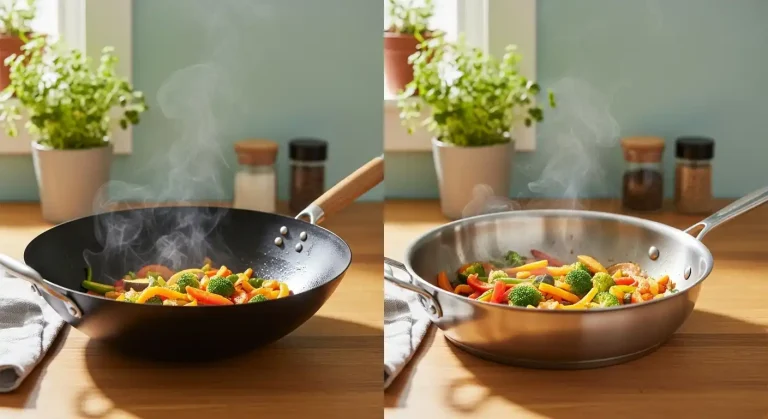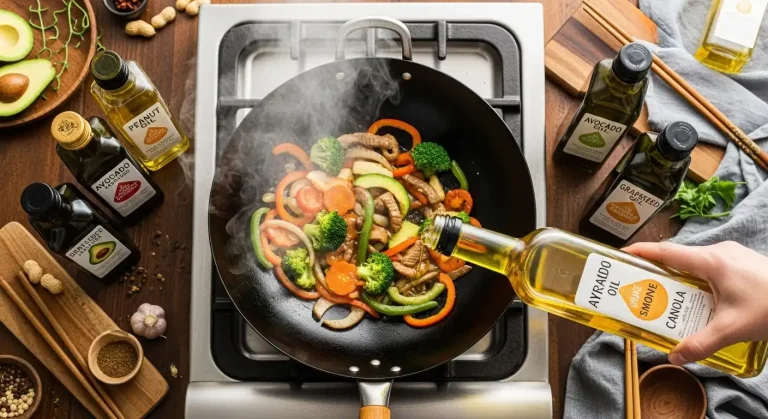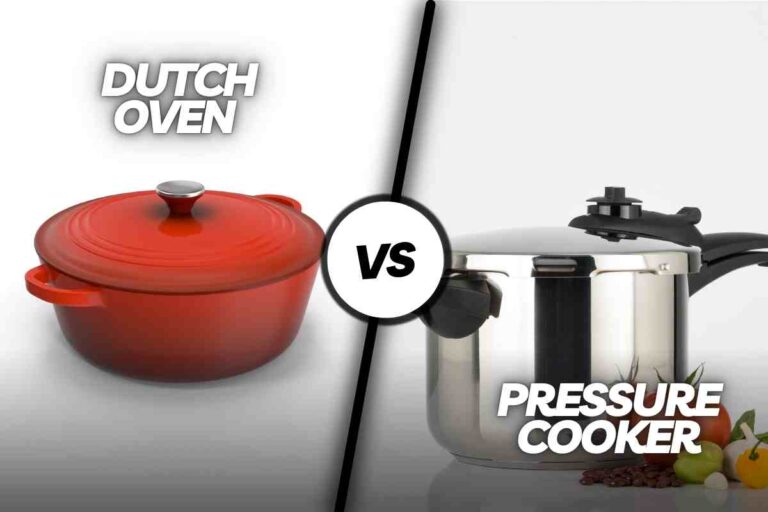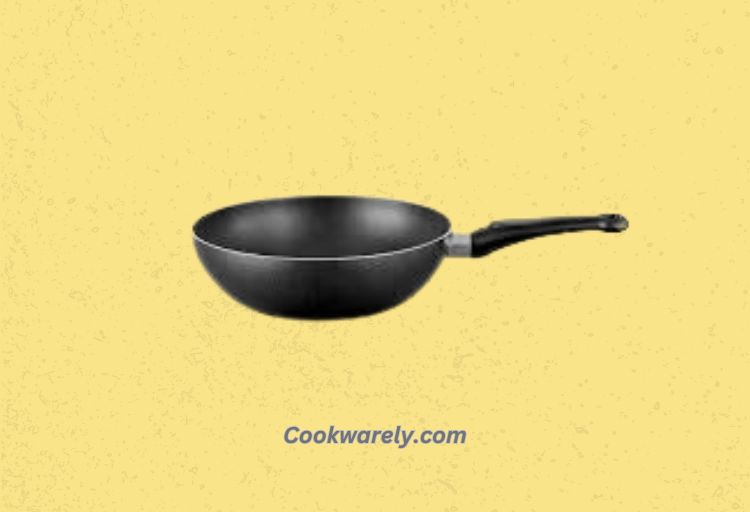Kadai Vs Wok: A Culinary Showdown for Home Cooks
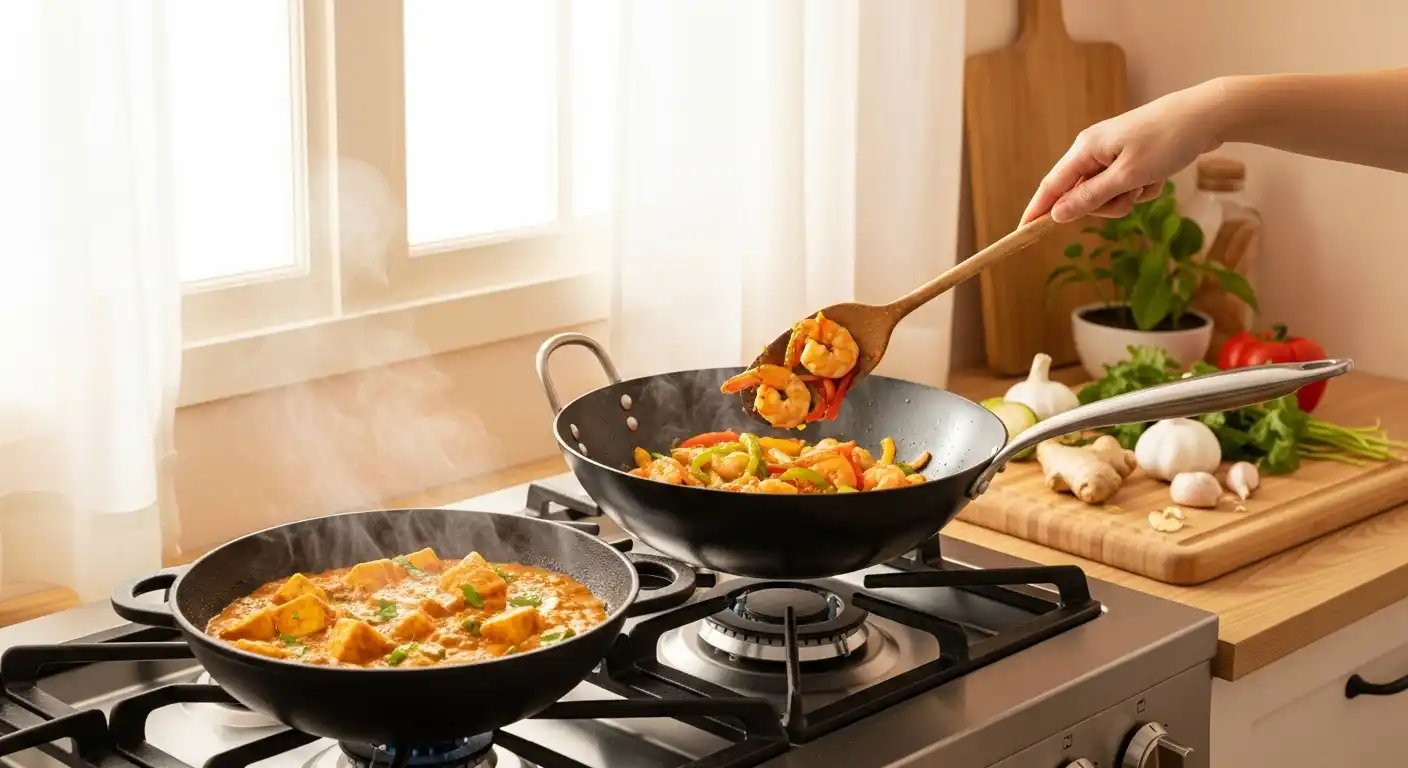
When it comes to cooking versatile, flavorful dishes, two kitchen heavyweights often come to mind: the kadai and the wok.
Both are iconic cookware pieces, deeply rooted in their respective culinary traditions, yet they share similarities that spark curiosity among home cooks.
In this exploration of Kadai Vs Wok, we’ll dive into their origins, designs, uses, and how they stack up for modern kitchens, helping you decide which one deserves a spot in your cookware collection.
What is a Kadai?
The kadai, also spelled kadhai, is a staple in Indian kitchens.
🎄 Christmas & Year-End Amazon Deals !
Don’t miss out on the best discounts and top-rated products available right now!
*As an Amazon Associate, I earn from qualifying purchases.
This deep, wide-mouthed, circular pan with a thick base and rounded edges is typically made from materials like cast iron, stainless steel, or aluminum.
Its design is ideal for slow-cooking curries, frying snacks, or tossing spices to release their aromas.
Kadais often feature two looped handles for easy maneuvering, and their sturdy build ensures even heat distribution.
Whether you’re simmering a rich butter chicken or frying crispy pakoras, the kadai’s versatility makes it a go-to for Indian cuisine.
Curious about how it compares to other cookware? Check out our Wok vs Dutch Oven comparison for more insights.
What is a Wok?
The wok, a cornerstone of Chinese and Southeast Asian cooking, is a round-bottomed or flat-bottomed pan with high, sloping sides.
Traditionally made from carbon steel or cast iron, woks are designed for high-heat cooking techniques like stir-frying, steaming, and deep-frying.
Their shape allows for quick tossing and even heat distribution, making them perfect for fast-paced dishes.
Woks come in various sizes, and choosing the right one depends on your cooking needs. For guidance, see What Size Wok Should You Buy?.
Their lightweight yet durable construction makes them a favorite for creating everything from fried rice to crispy noodles.
Kadai Vs Wok: Design Differences
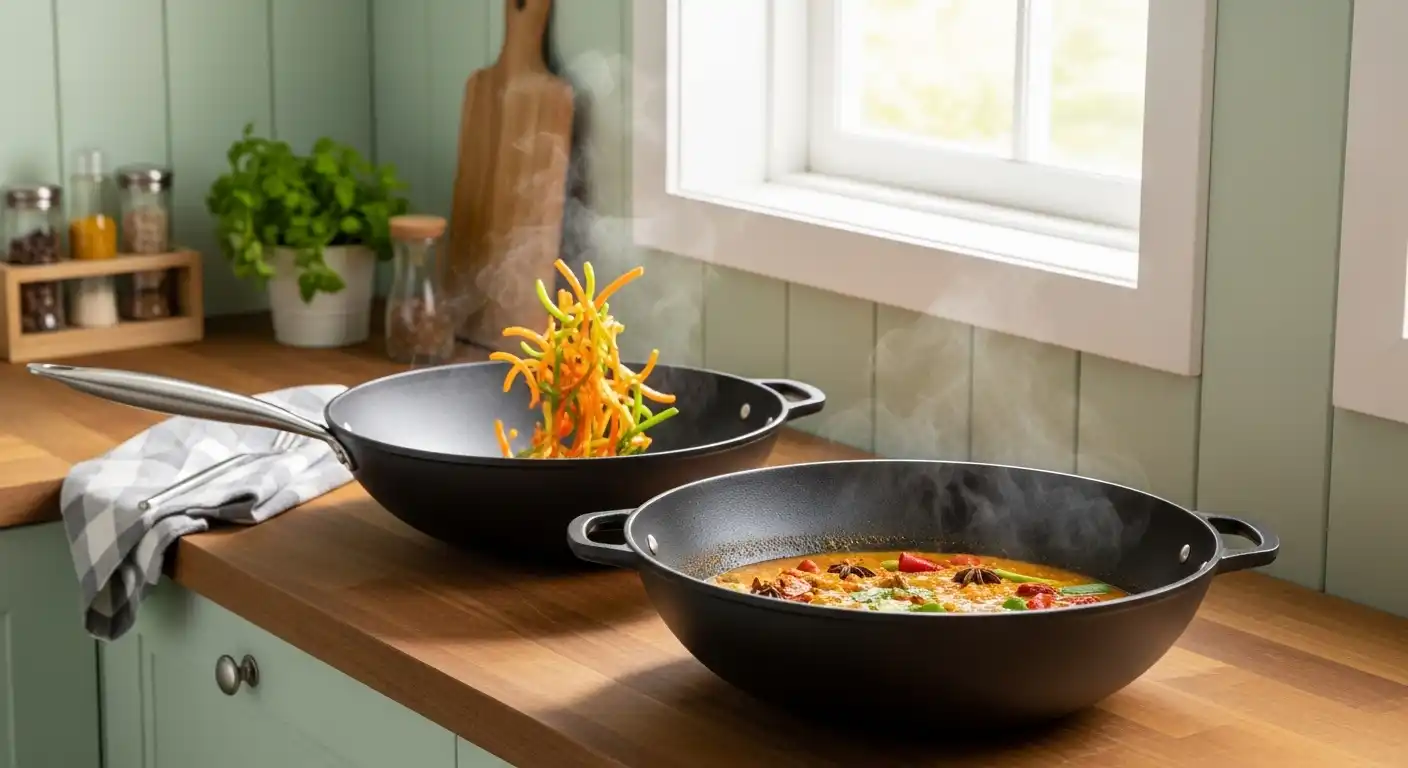
While both the kadai and wok are rounded cookware pieces, their designs cater to distinct cooking styles.
The kadai’s deeper, thicker build is suited for slower, more controlled cooking.
Its flat base (in modern versions) ensures stability on various stovetops, including electric ones.
Learn more about using round-bottom woks on electric stoves here.
🎄 Christmas & Year-End Amazon Deals !
Don’t miss out on the best discounts and top-rated products available right now!
*As an Amazon Associate, I earn from qualifying purchases.
In contrast, the wok’s high, sloping sides and thinner walls are engineered for rapid heat transfer.
This makes it ideal for stir-frying, where ingredients need to cook quickly at high temperatures.
The wok’s design also allows for tossing ingredients without spilling, a feature less prominent in the kadai.
Traditional woks often have a round bottom, optimized for gas stoves, but flat-bottom versions are available for modern kitchens.
If you’re using an electric stovetop, check out How to Use a Flat-Bottom Wok on an Electric Stove for tips.
Material Matters: Kadai Vs Wok
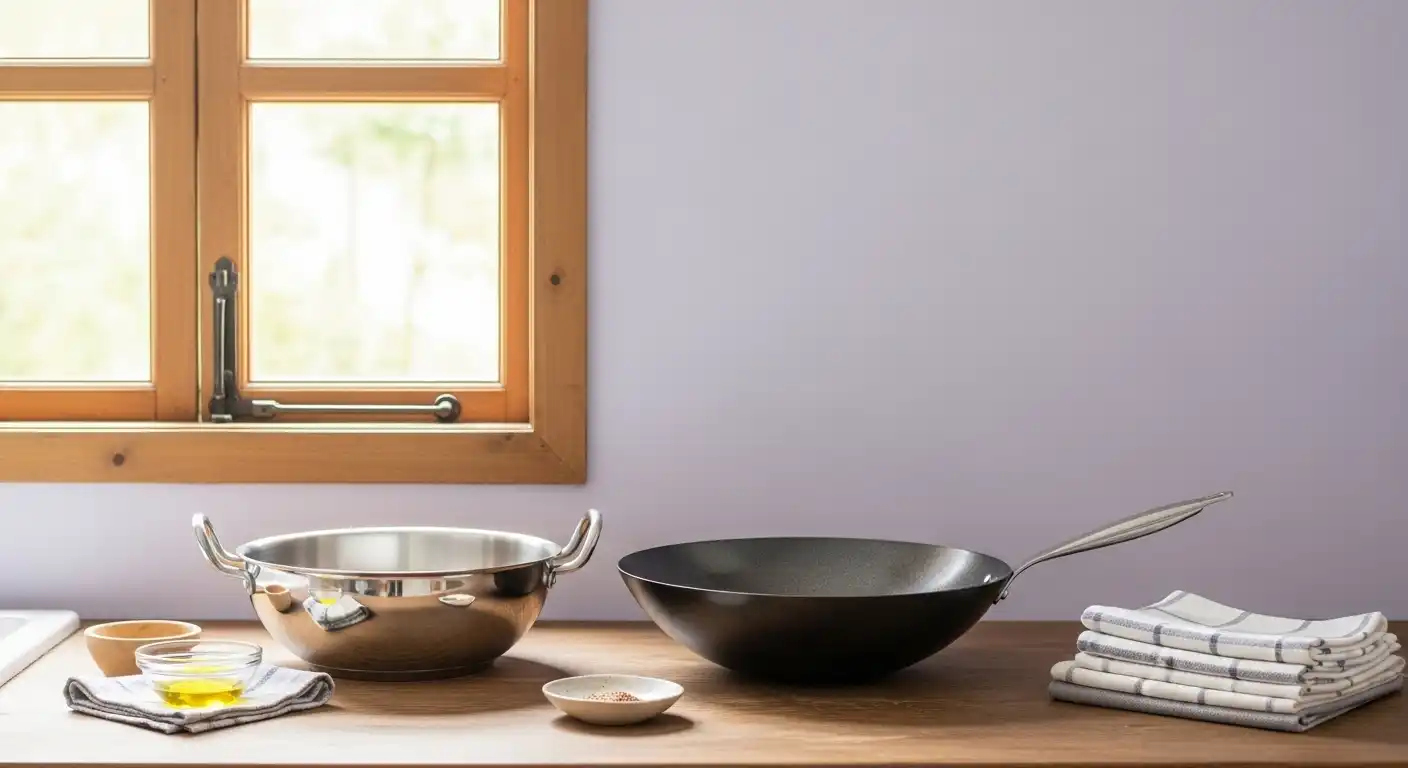
Kadais are commonly made from cast iron, stainless steel, or aluminum, with cast iron being a popular choice for its durability and heat retention.
A well-seasoned cast iron kadai develops a natural non-stick surface, perfect for frying or sautéing.
For maintenance tips, see How to Clean a Cast Iron Wok, which applies similar principles.
Woks, on the other hand, are typically crafted from carbon steel or cast iron, with carbon steel being the most common due to its lightweight nature and quick heating.
Seasoning is crucial for carbon steel woks to achieve a non-stick patina.
Curious about the process? Read How to Season a Wok (Carbon Steel) for a step-by-step guide.
Both cookware types benefit from seasoning, but woks require more frequent maintenance to maintain their patina.
🎄 Christmas & Year-End Amazon Deals !
Don’t miss out on the best discounts and top-rated products available right now!
*As an Amazon Associate, I earn from qualifying purchases.
Wondering what a healthy wok patina looks like? Check out What Should My Wok Patina Look Like?.
Cooking Techniques: Kadai Vs Wok
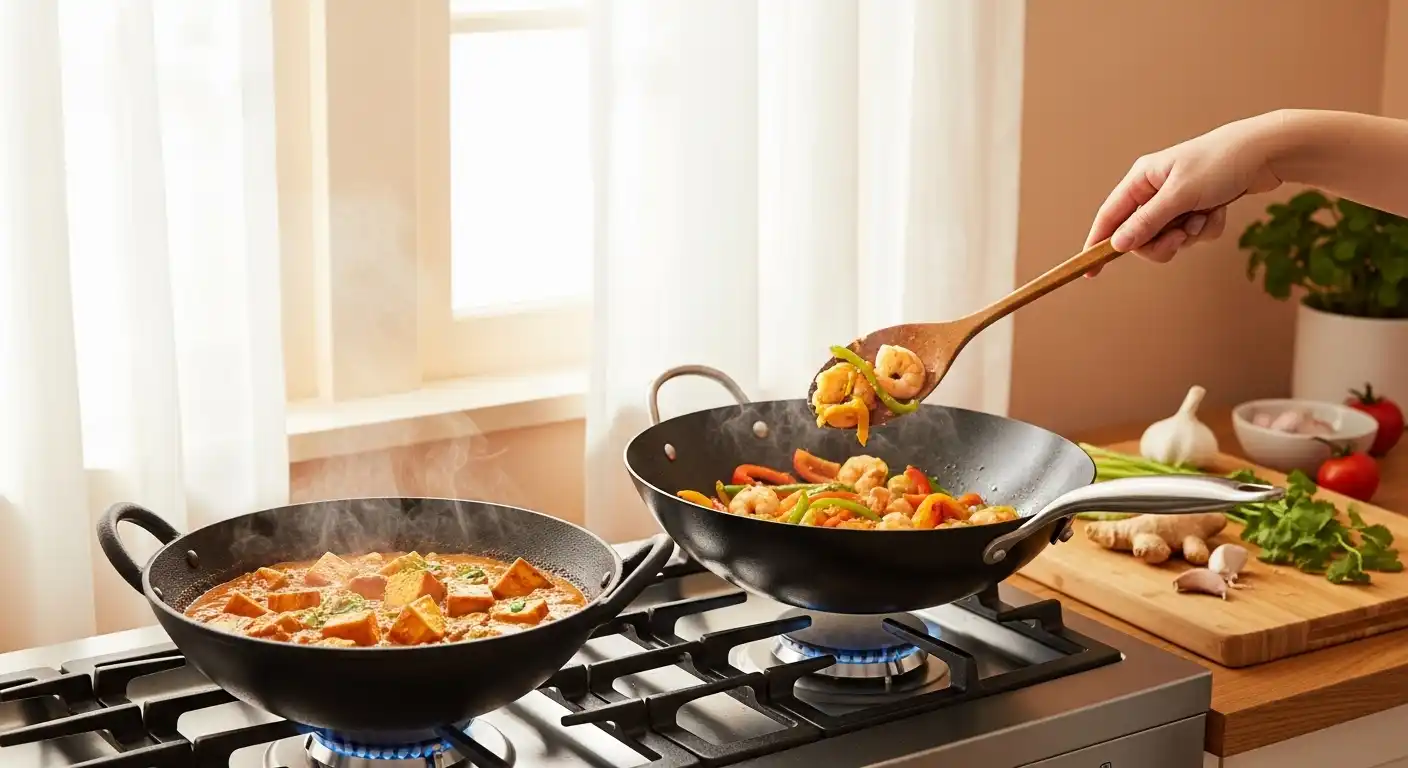
The kadai shines in Indian dishes that require slow simmering, frying, or tempering spices. Its depth makes it perfect for preparing curries, biryanis, or deep-fried snacks like samosas.
The kadai’s thick walls retain heat, allowing flavors to meld over time, which is ideal for dishes like kadai paneer or chicken tikka masala.
Woks excel in high-heat, fast-cooking methods like stir-frying, steaming, and searing.
The sloping sides allow for easy tossing, ensuring ingredients cook evenly. You can even use a wok for deep-frying or cooking rice.
For more ideas, explore What Can You Cook in a Wok Besides Stir-Fry? or Can You Cook Rice in a Wok?.
While both can handle frying, the wok’s shape makes it better suited for quick stir-fries, while the kadai is ideal for dishes requiring longer cooking times.
For deep-frying tips, see Best Wok for Deep Frying.
Versatility in the Kitchen
Both the kadai and wok are incredibly versatile, but their strengths lie in different areas.
The kadai is a workhorse for Indian cuisine, handling everything from curries to snacks. Its depth and sturdy build make it suitable for larger batches, perfect for family meals.
The wok, however, is a multitasker for Asian-inspired dishes. From stir-fries to steamed buns, its design supports a range of techniques.
It’s also great for small batches of popcorn—learn how in How to Make Popcorn in a Wok.
🎄 Christmas & Year-End Amazon Deals !
Don’t miss out on the best discounts and top-rated products available right now!
*As an Amazon Associate, I earn from qualifying purchases.
If you’re wondering about other cookware comparisons, our Wok vs Frying Pan article breaks it down.
Compatibility with Modern Stovetops
Using a kadai or wok on modern stovetops requires some consideration. Kadais, with their flat bases, are generally compatible with electric, gas, and induction cooktops.
Woks, especially round-bottom ones, may need a wok ring for stability on electric or gas stoves. For details, check What is a Wok Ring and How to Use It Properly.
For induction users, ensure your wok or kadai is made of compatible materials like carbon steel or cast iron.
Learn more in Will a Wok Work on an Induction Cooktop? or Can You Use a Carbon Steel Wok on Induction?.
Kadai Vs Wok: Which is Healthier?
Both kadai and wok cooking can be healthy, depending on the techniques and materials used.
Carbon steel woks, when properly seasoned, are naturally non-stick, reducing the need for excess oil. Learn about their safety in Is Carbon Steel Wok Safe for Health?.
Kadais, especially cast iron ones, can add trace amounts of iron to food, which is beneficial for some diets.
However, both require proper care to avoid rust or damage. For cleaning tips, see How to Clean a Wok.
Maintenance and Care
Maintaining a kadai or wok is key to their longevity. Cast iron kadais and woks need regular seasoning to prevent rust and maintain their non-stick surface.
For induction users, How to Season a Wok on an Induction Hob offers specific advice.
Stainless steel kadais are easier to clean and don’t require seasoning, but they may not develop the same non-stick patina.
🎄 Christmas & Year-End Amazon Deals !
Don’t miss out on the best discounts and top-rated products available right now!
*As an Amazon Associate, I earn from qualifying purchases.
Avoid dishwashers for both, as they can damage the seasoning. Curious about dishwasher safety? Read Are Woks Dishwasher Safe?.
Which Should You Choose?
Choosing between a kadai and a wok depends on your cooking style and preferences.
If Indian cuisine is your focus, with its rich curries and fried snacks, a kadai is your best bet. Its sturdy build and depth make it a kitchen staple.
For those who love quick, high-heat Asian dishes like stir-fries or fried rice, a wok is unbeatable. Its lightweight design and versatility make it a must-have.
For recommendations, check What Wok Should I Buy? or Best Wok for Cooking Fried Rice.
Final Thoughts: Kadai Vs Wok
In the battle of Kadai Vs Wok, there’s no clear winner—both are exceptional tools tailored to different culinary worlds.
The kadai’s robust design is perfect for slow-cooked, aromatic Indian dishes, while the wok’s sleek shape excels in fast, vibrant Asian recipes.
Consider your cooking habits, stovetop type, and maintenance preferences when deciding.
For a deeper dive into wok cooking, explore How to Cook in a Wok or compare other cookware in Wok vs Stir-Fry Pan.
Ultimately, whether you choose a kadai, a wok, or both, your kitchen adventures are sure to be delicious!

